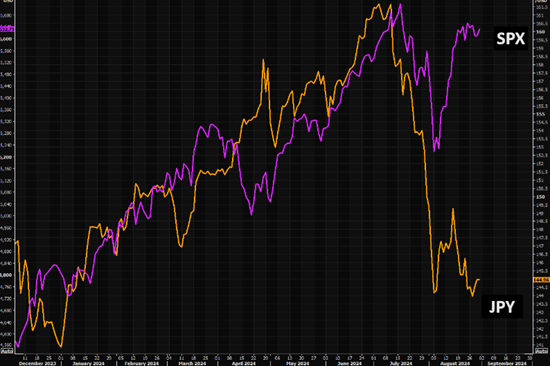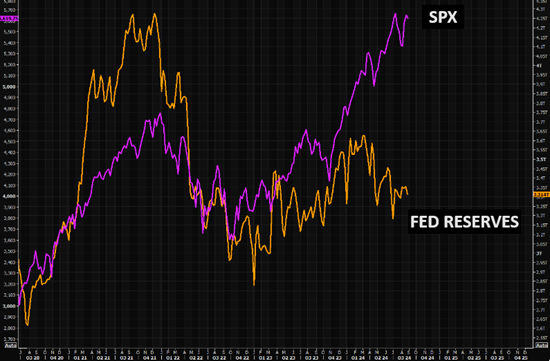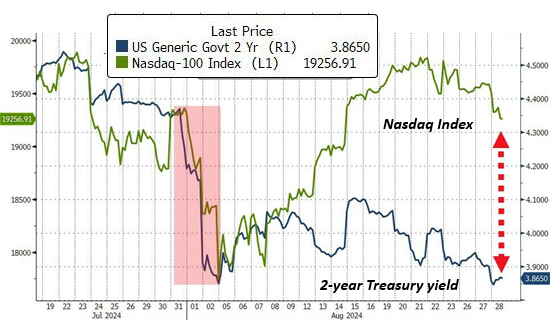Authored by Charles Hugh-Smith via oftwominds,
Markets are manipulated, yes, but they’re still structures of tightly bound, self-organizing complexity which lend themselves to sudden non-linear collapses.
Just as thunderstorms scent the air before their arrival, market crashes often announce themselves in the autumn zephyrs. Markets don’t crash when everyone’s in full-blown panic; they crash when the headlines and data are reassuring, analysts are confident in ever-higher profits, and complacency reigns supreme, evidenced by record-high household allocation in stocks and Bullish sentiment readings.
Markets crash after a brief bit of panic selling is immediately bought and markets are returned to a permanently high plateau of valuation as we saw in August, as the S&P 500 shot back up within a whisker or two of all-time highs. Punters buy every dip because this quick reaction to any drop has been richly rewarded for 15 years, and everyone has confidence in the Fed Put, i.e. the belief that the Fed will move Heaven and Earth to restore “market confidence” and the wealth effect.
In other words, market participants have embraced moral hazard: there is no real downside, there is only upside to buying every dip.
Markets crash when the rot beneath the surface is invisible or goes unnoticed. The few doom-and-gloomers who note extremes are immediately mocked off the stage, and the headlines tout the resilience of the economy, markets, employment, profits, and the techno-wonders heading our way.
After the crash nobody predicted, analysts swarm like ravenous locusts to the digital airwaves to lay claim to their prescience: look, look, I added a one-line disclaimer about “irrational exuberance” at the end of my report!
I’ll spare you the analog charts and go right to the chase: the Oasis Indicator, brought to our collective attention by Joe Sullivan-Bennett via BondVigilantes.com: The Peculiar Relationship Between Oasis & Periods Of Extreme Market Volatility (Zero Hedge). (Fun fact: Before Oasis Wonderwall, there was George Harrison’s 1968 soundtrack LP Wonderwall.)
Those turning up their nose at the Oasis Indicator might benefit from pondering these “jaws of death” charts. Everything is extreme and stays extreme until it doesn’t. Consider the gaping pearly teeth of the SPX (S&P 500) and JPY (Japanese yen).

Or the Mack the Knife of SPX and Fed reserves: You know when that shark bites with his teeth, Scarlet billows start to spread…

And last but not least, the 2-year Treasury yield and the Nasdaq Index: a loaded mousetrap if there ever was one.

There’s no convincing the complacent. You either sense what’s coming or you don’t. It’s like a sixth sense in a way, an intuitive awareness developed by absorbing huge losses in previous “unpredicted” crashes.
Markets are manipulated, yes, but they’re still structures of tightly bound, self-organizing complexity which lend themselves to sudden non-linear collapses.
But never mind, a little autumn shower never hurt anyone. And so nobody carries an umbrella on a day that starts out sunny and clouds over too quickly to respond.
Playing It Safe (9/6/24)
Is the “Everything Bubble” About to Pop? (9/4/24)
What If All the Conventional Models Fail to Predict What Happens Next? (9/2/24)
New podcast: Is the Everything Bubble About to Pop? (37 min, 40 charts)